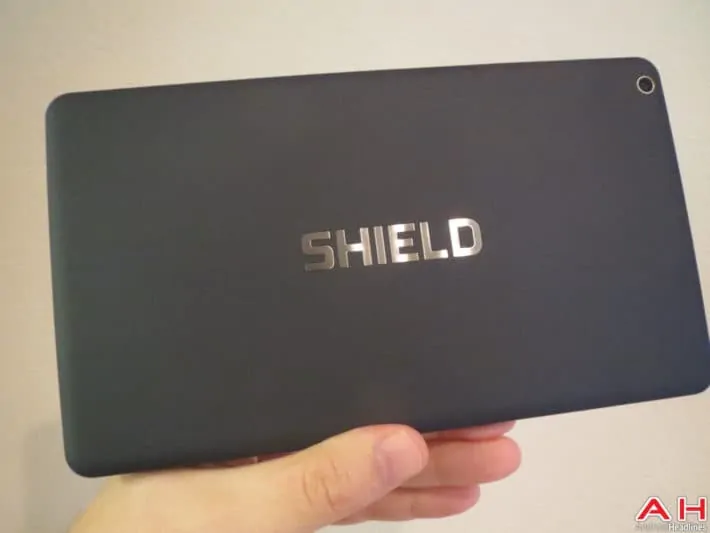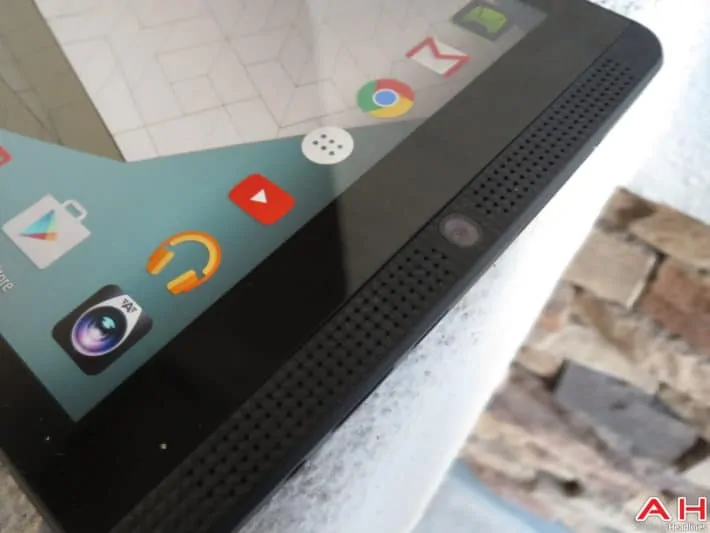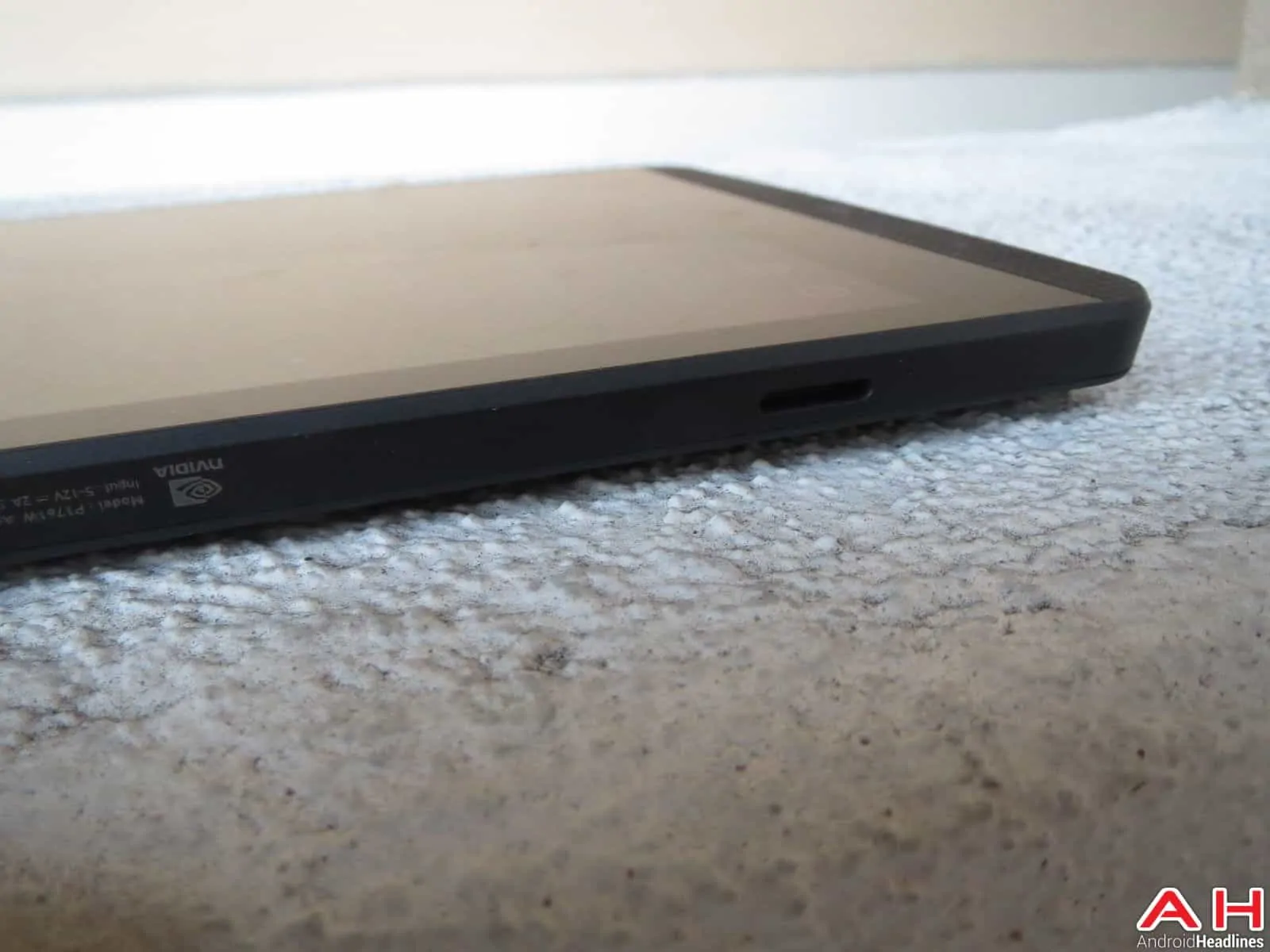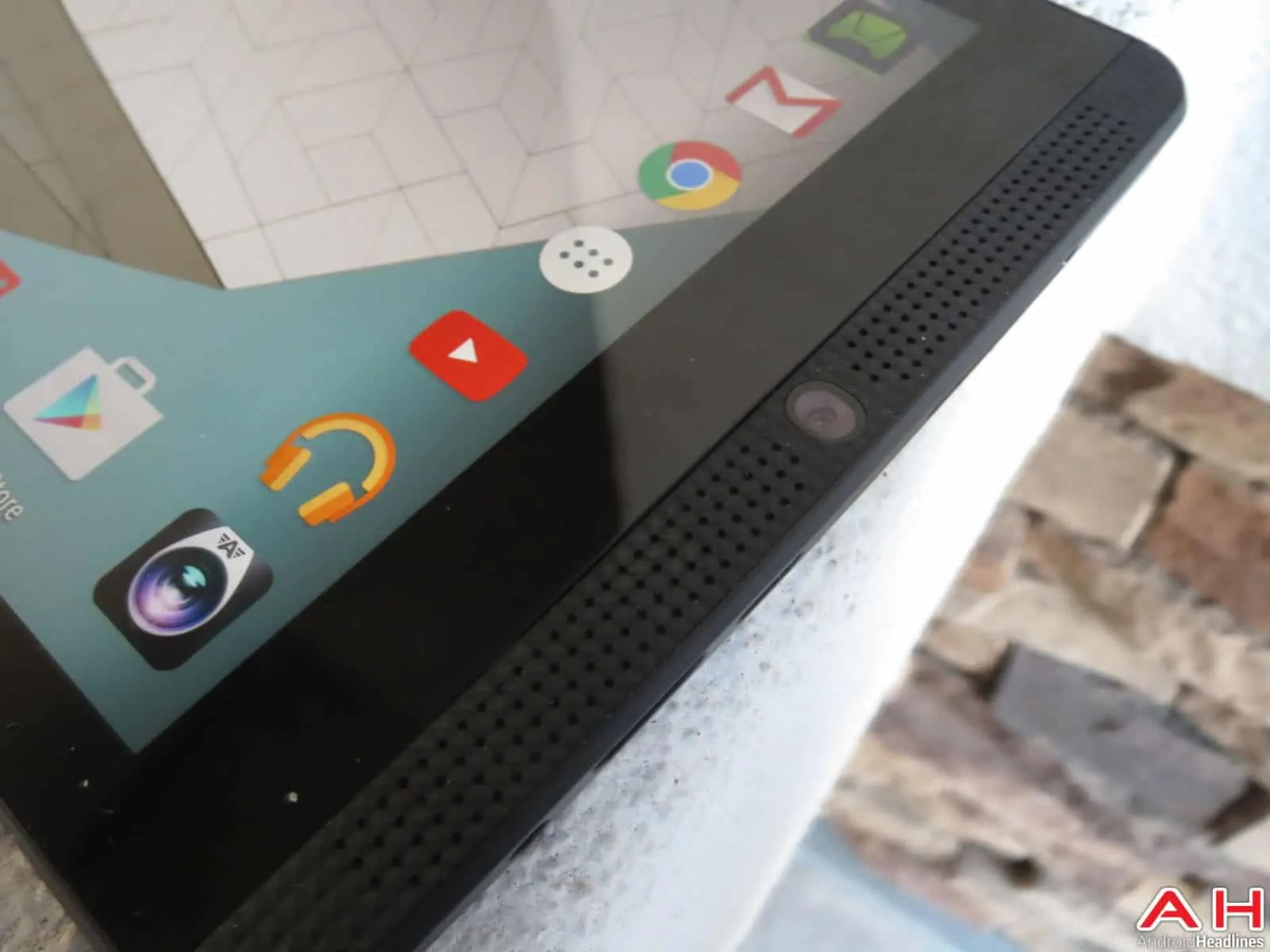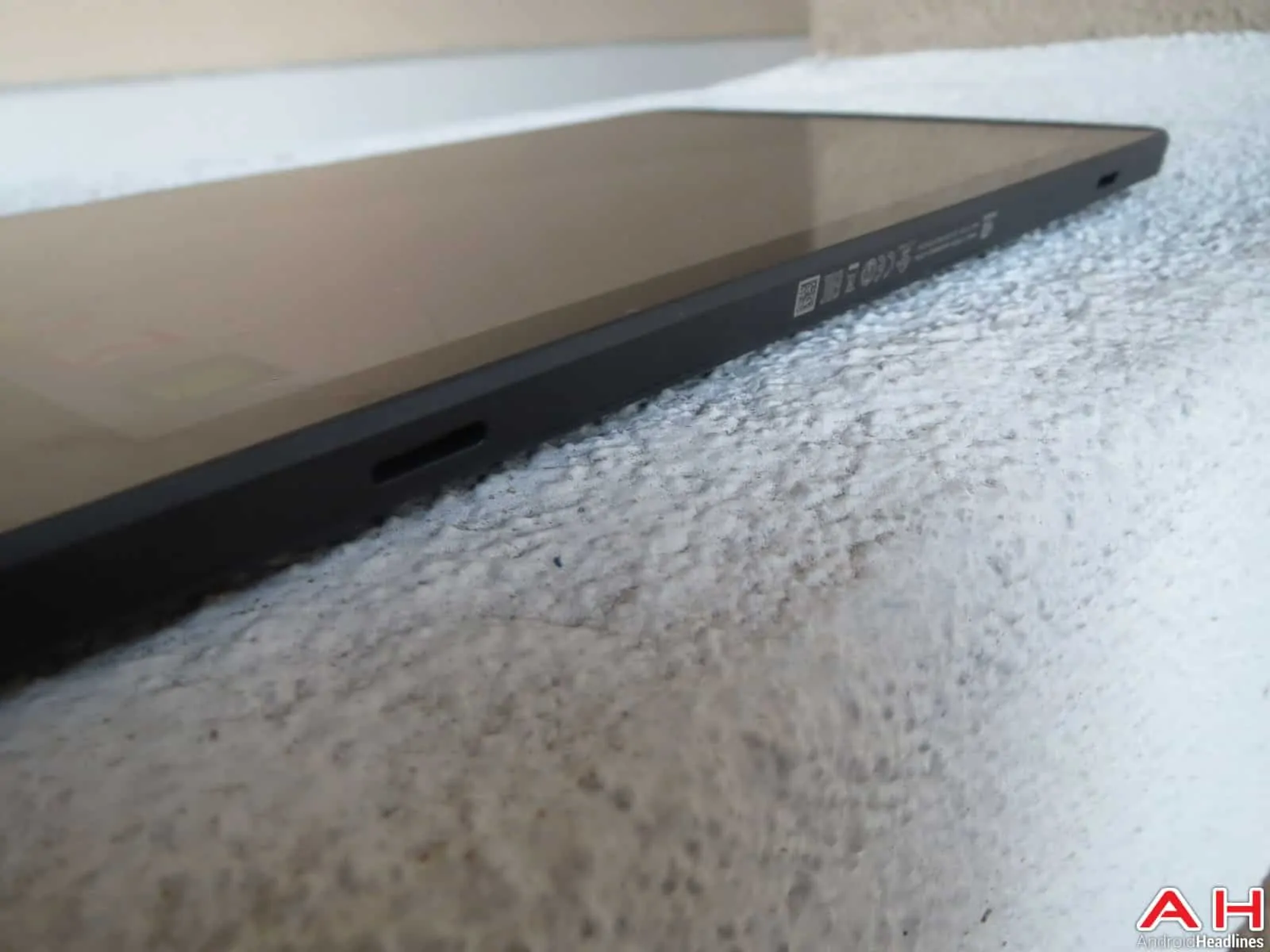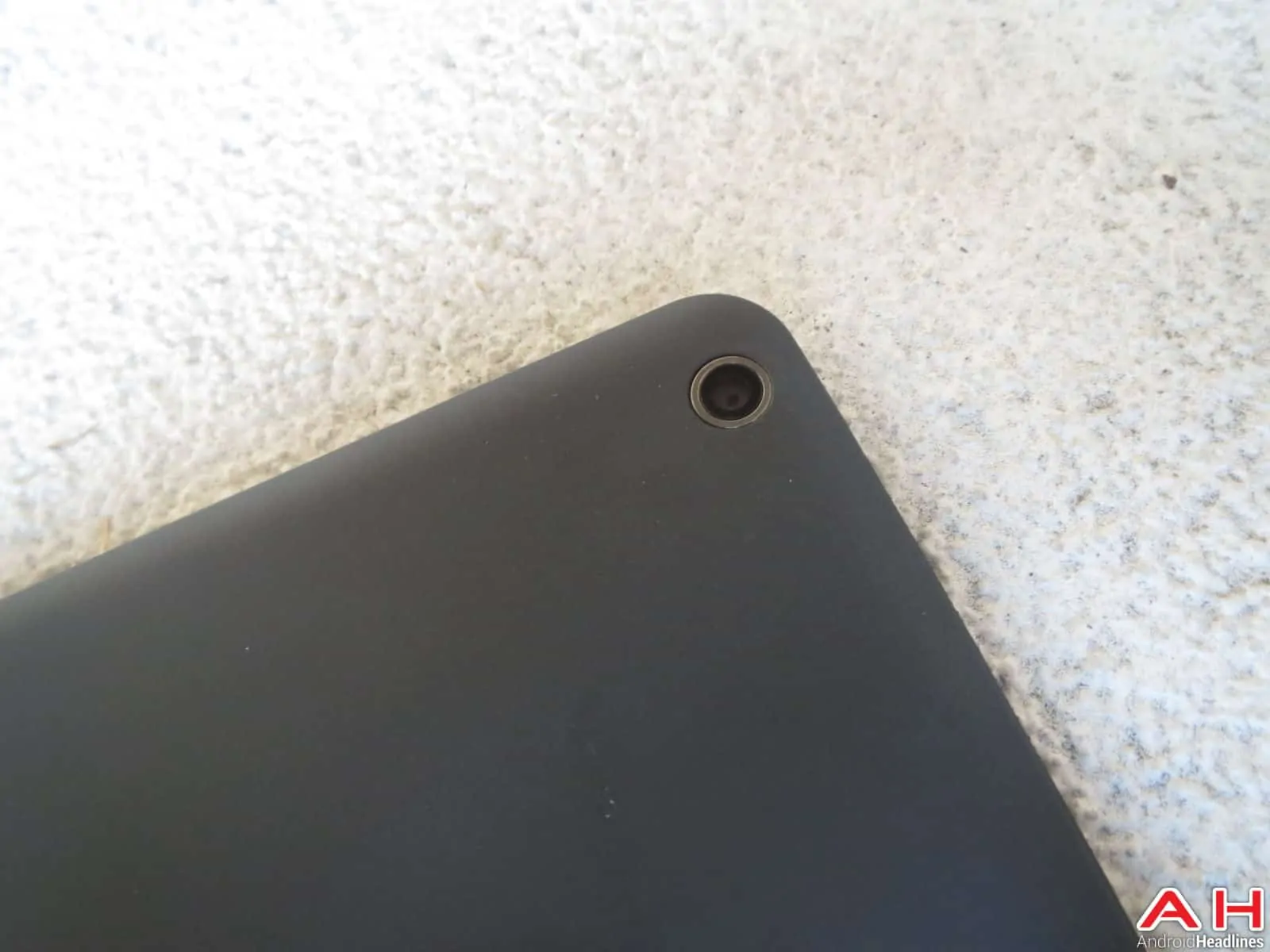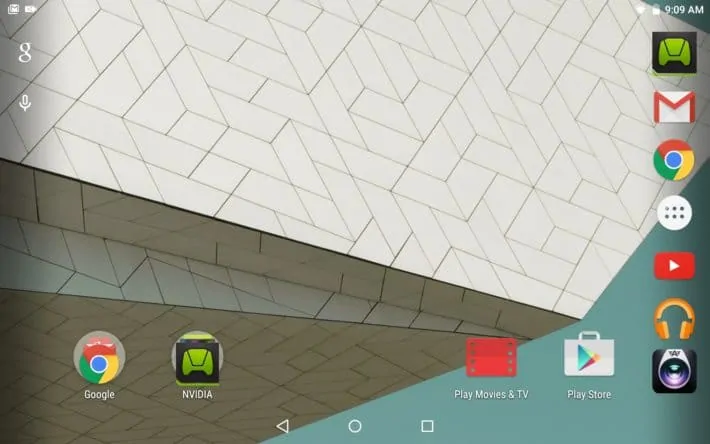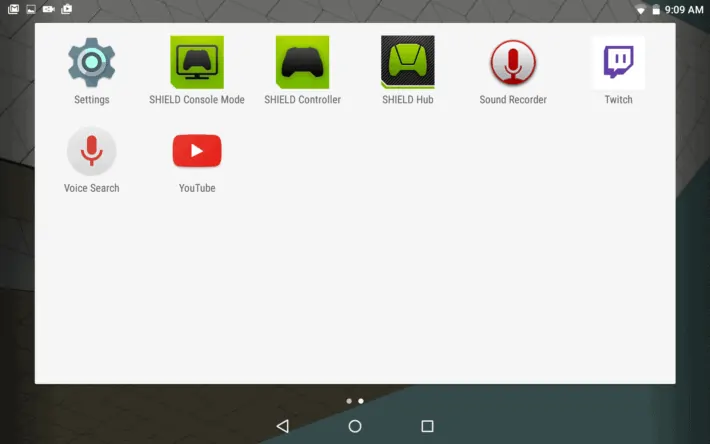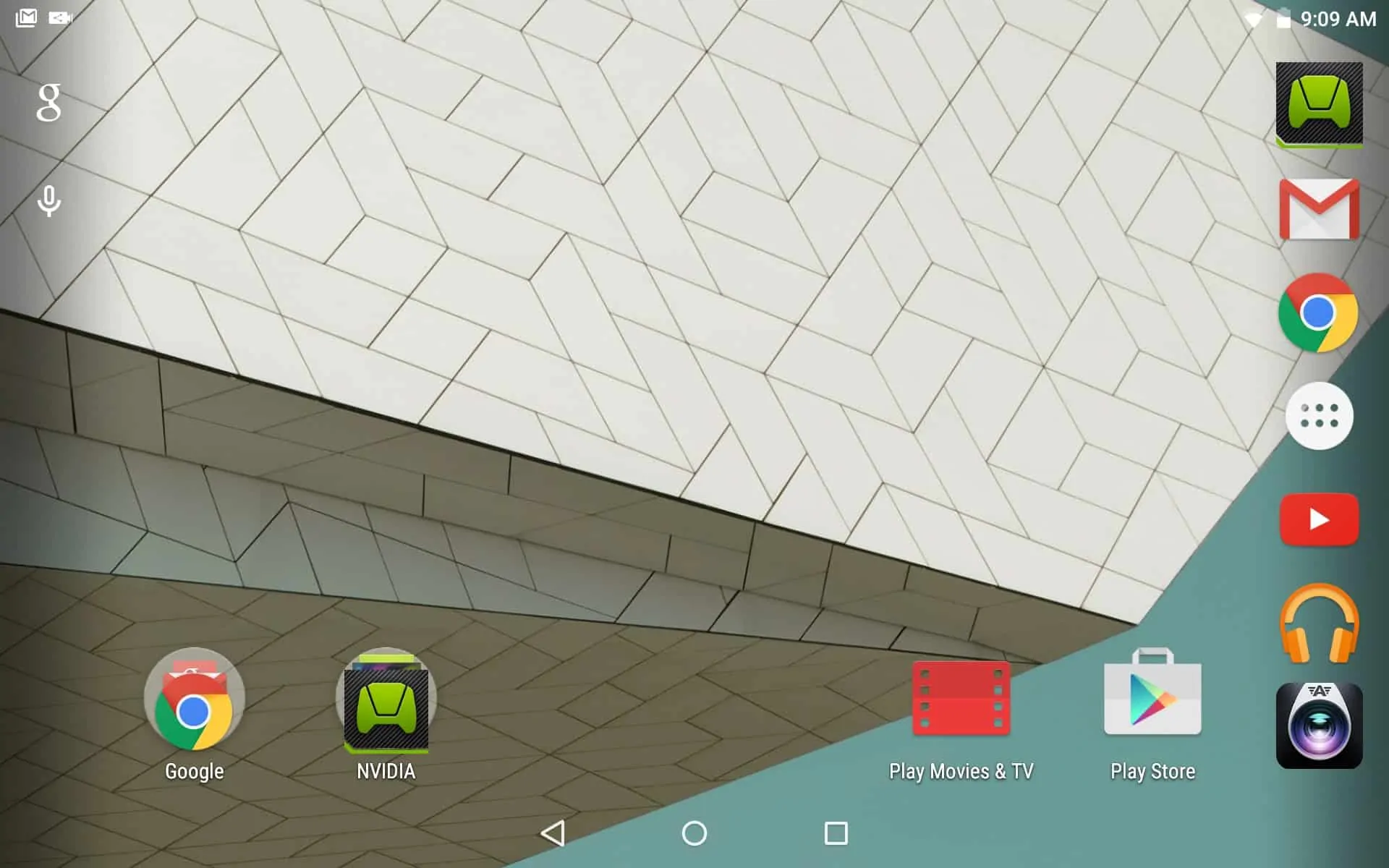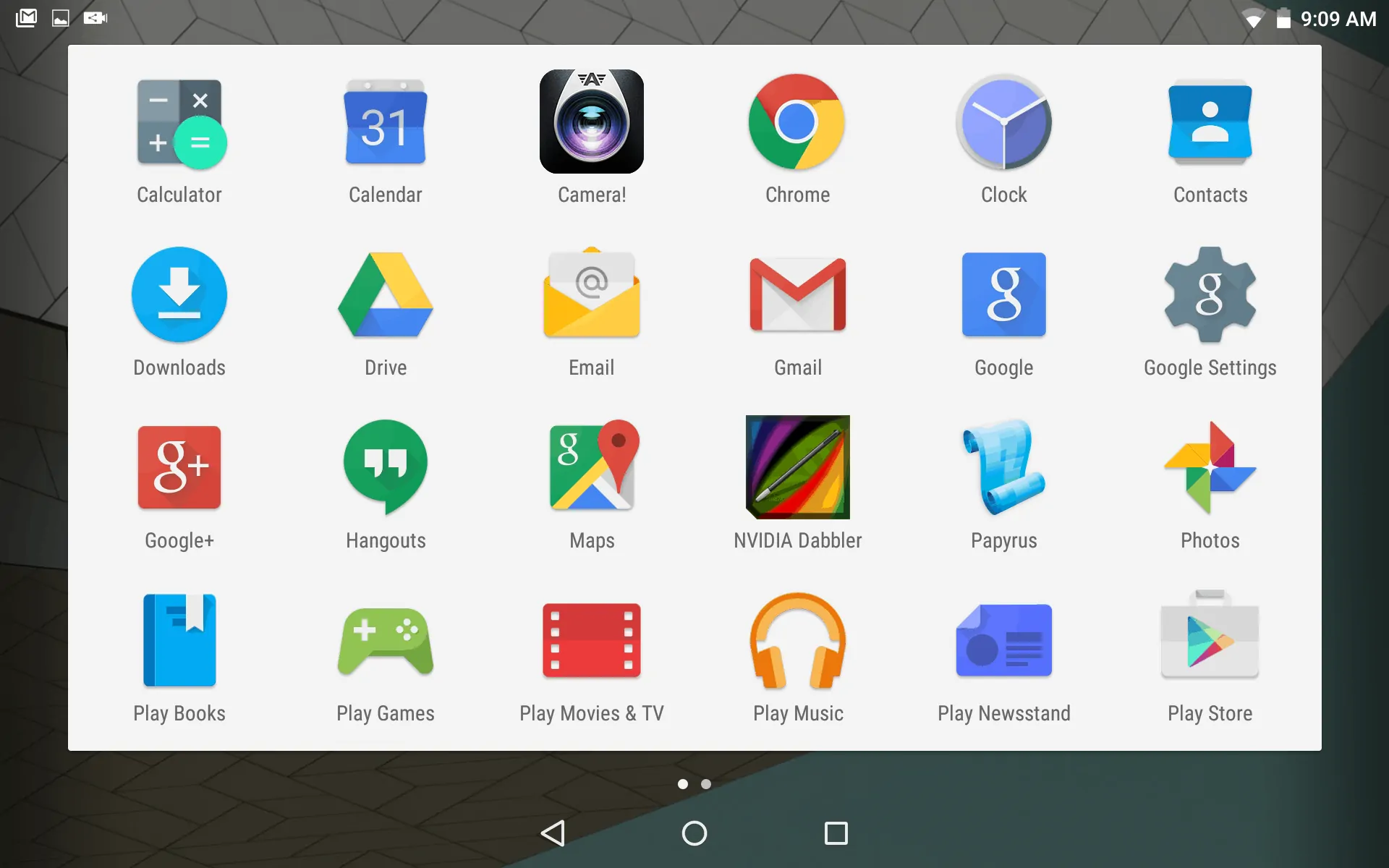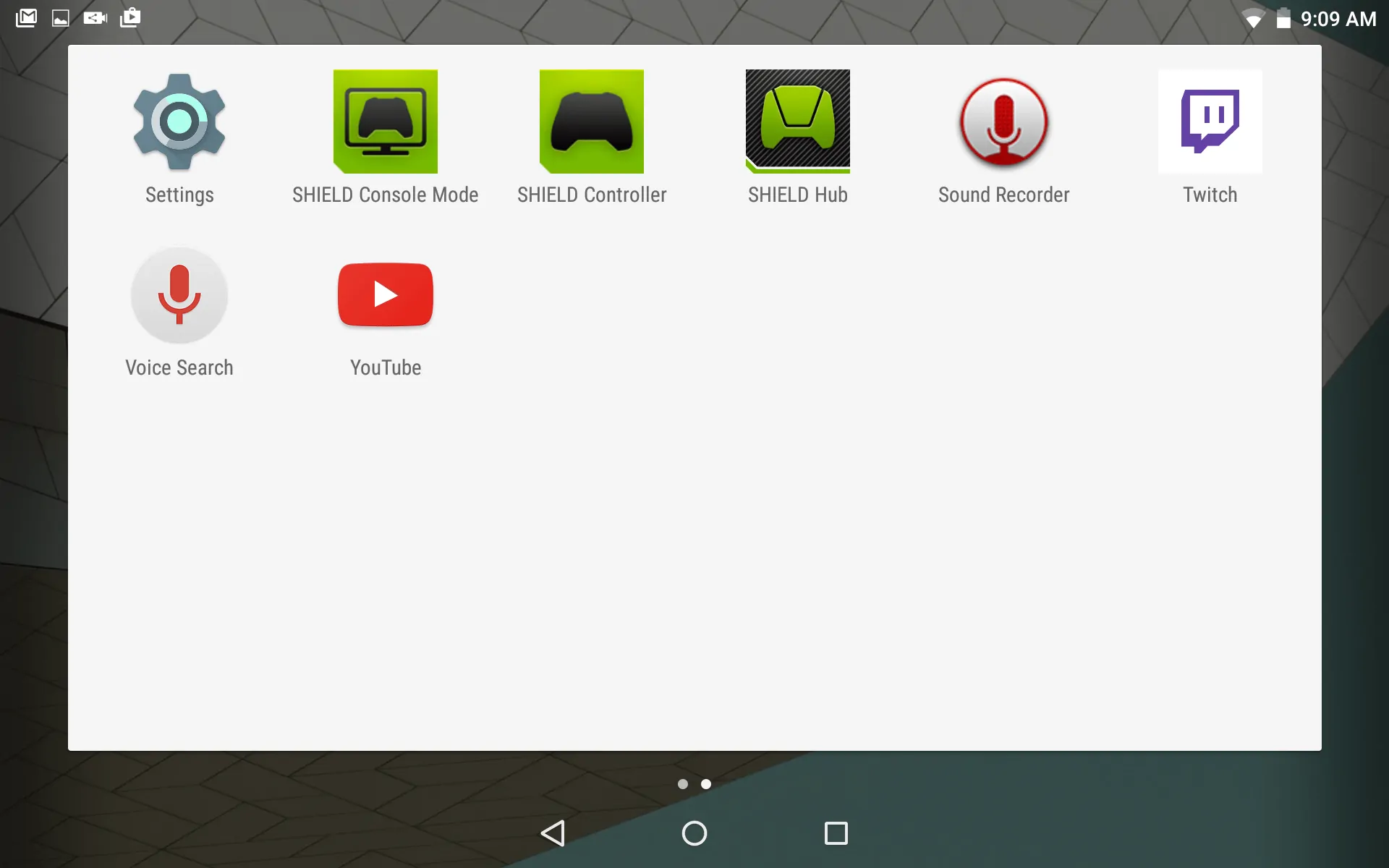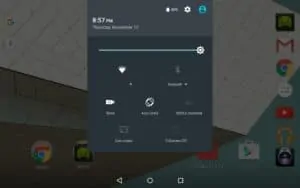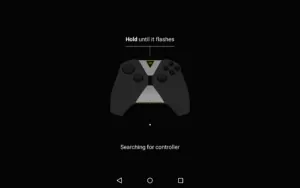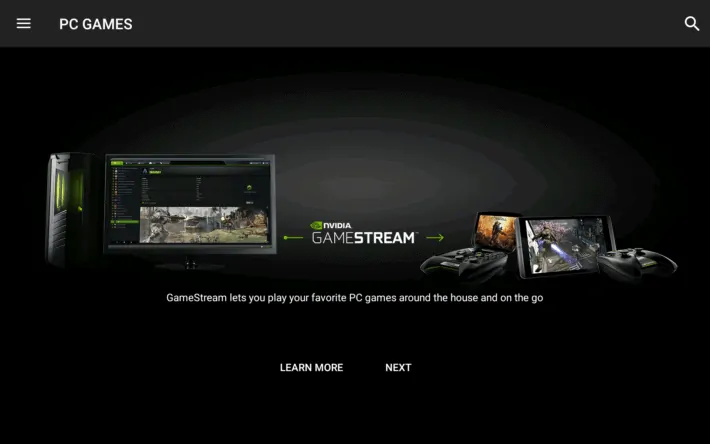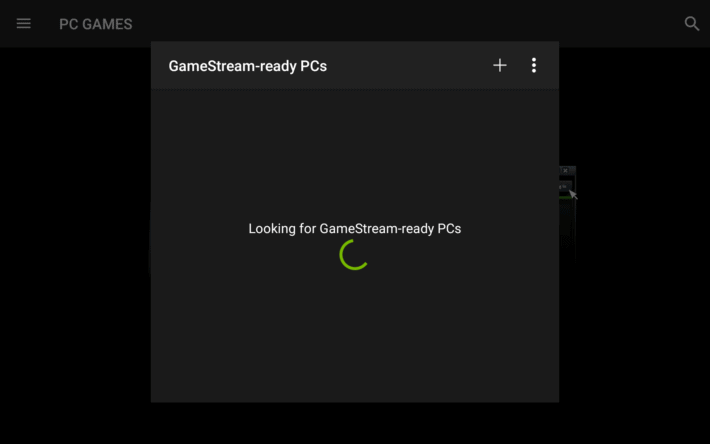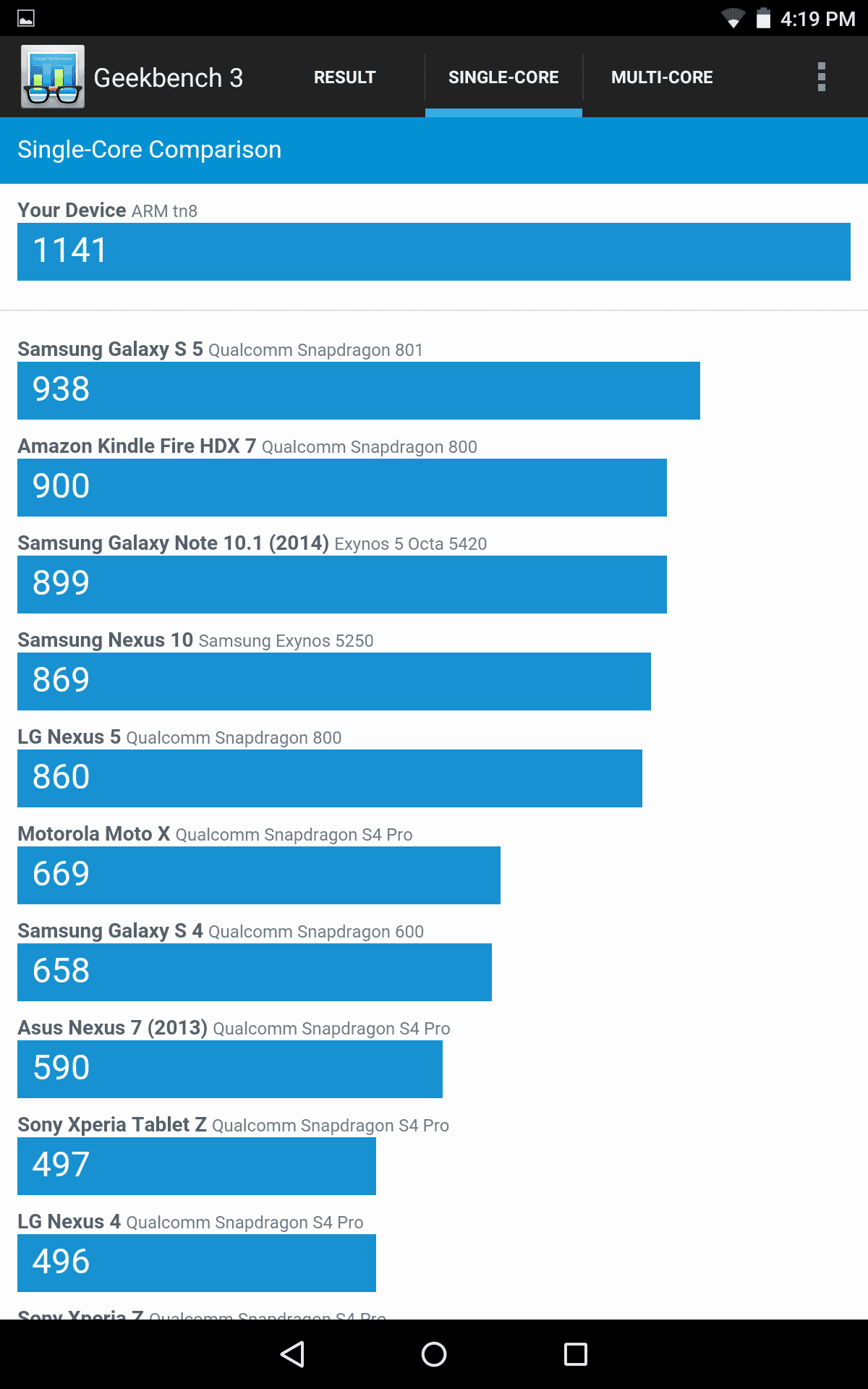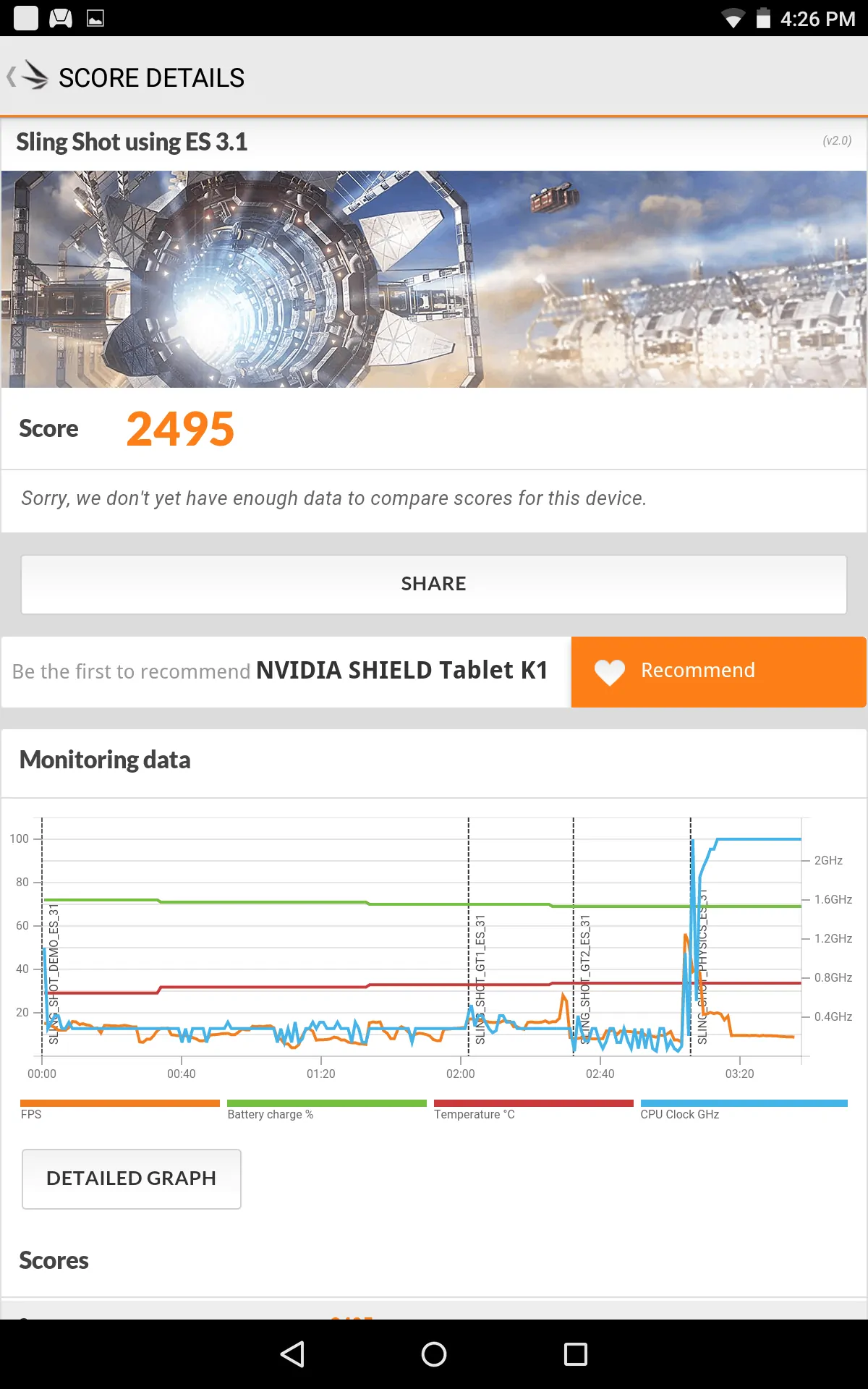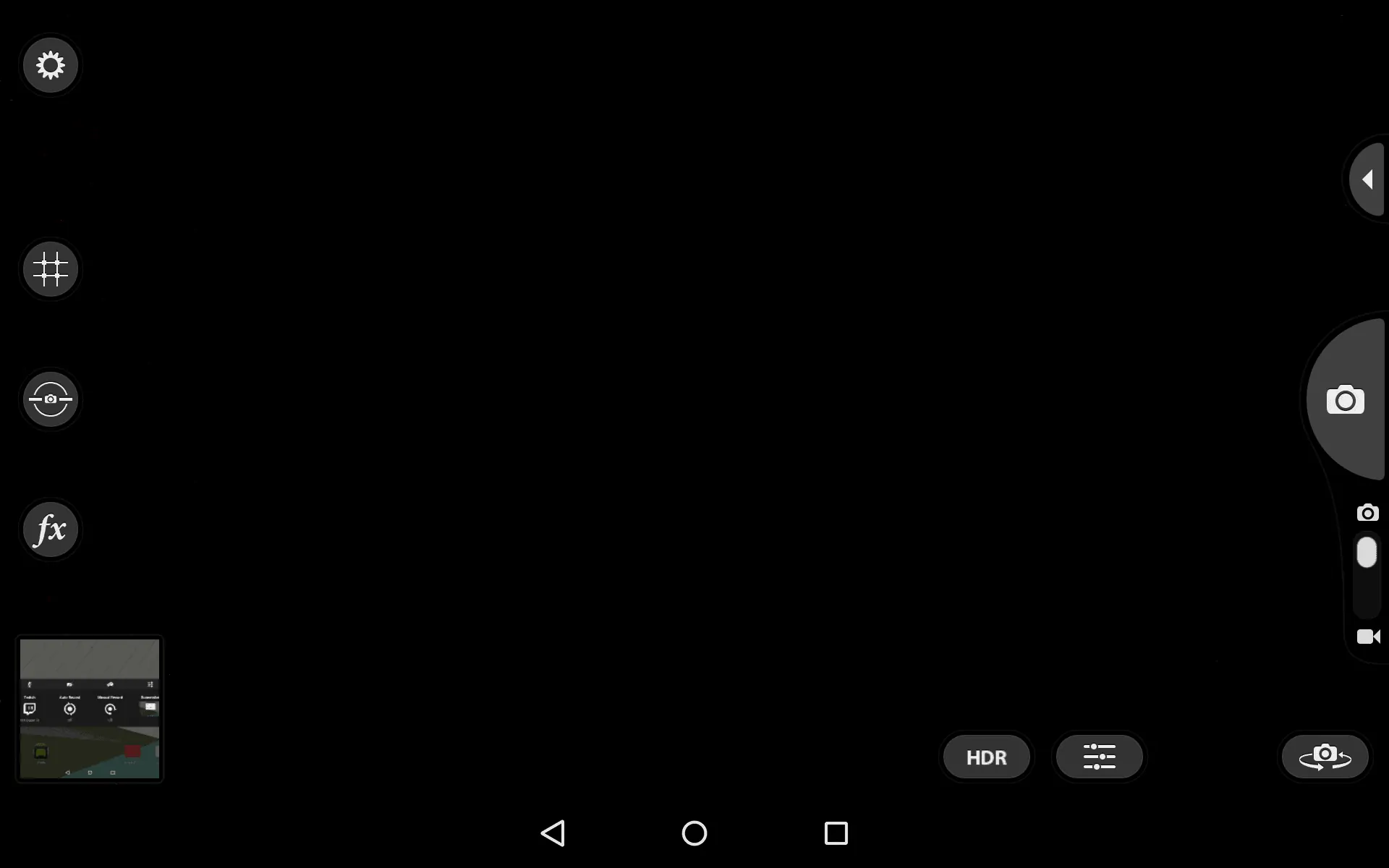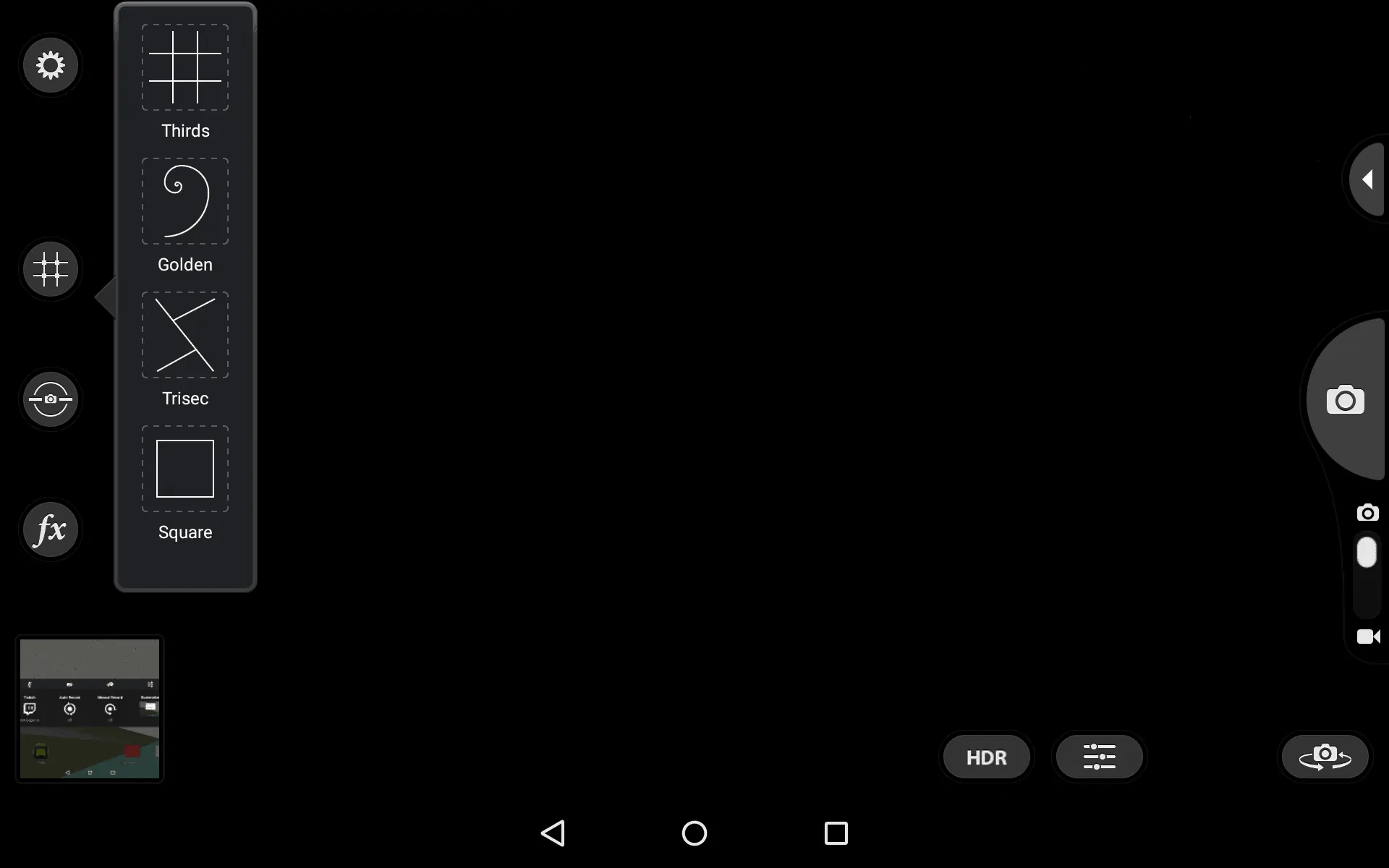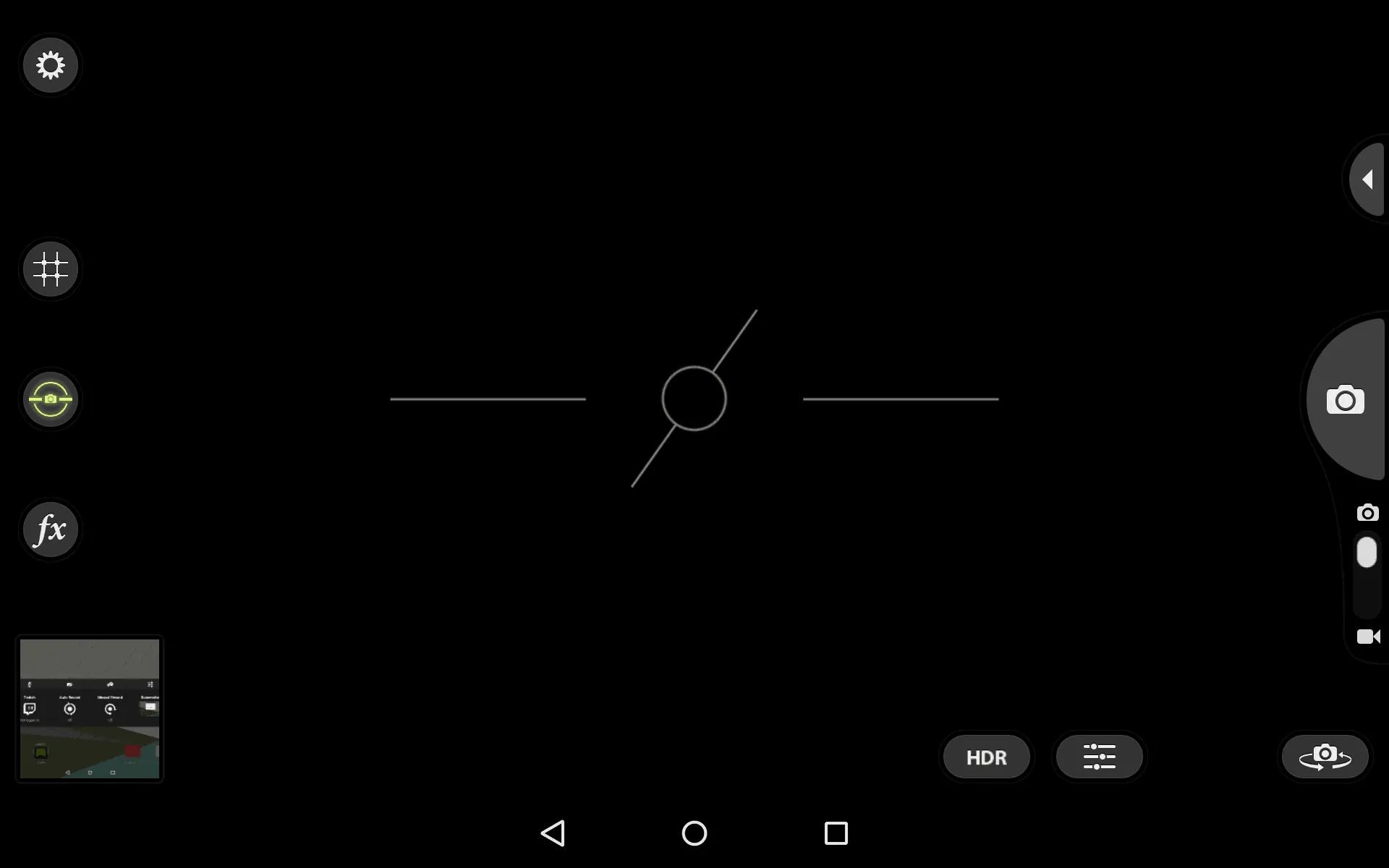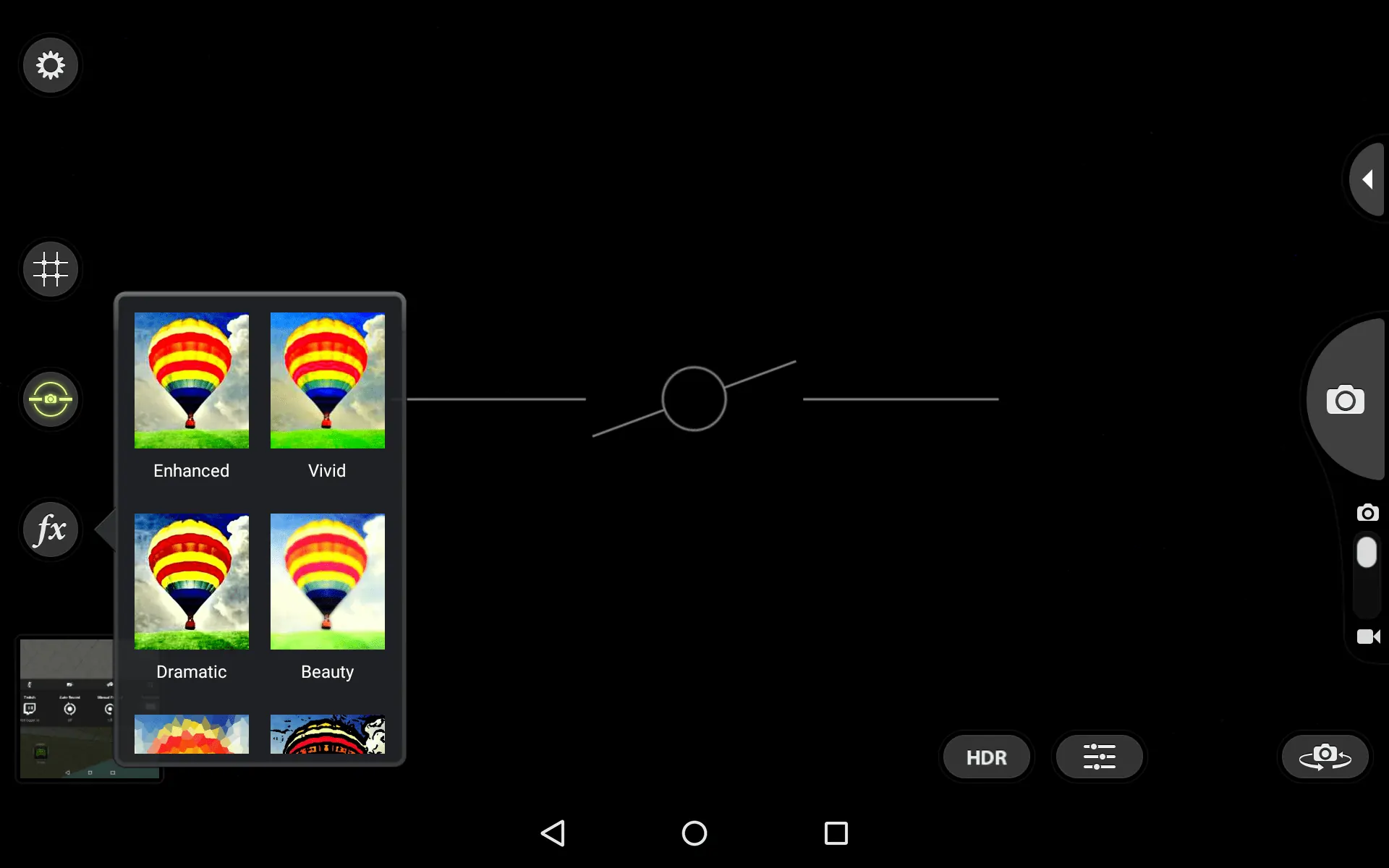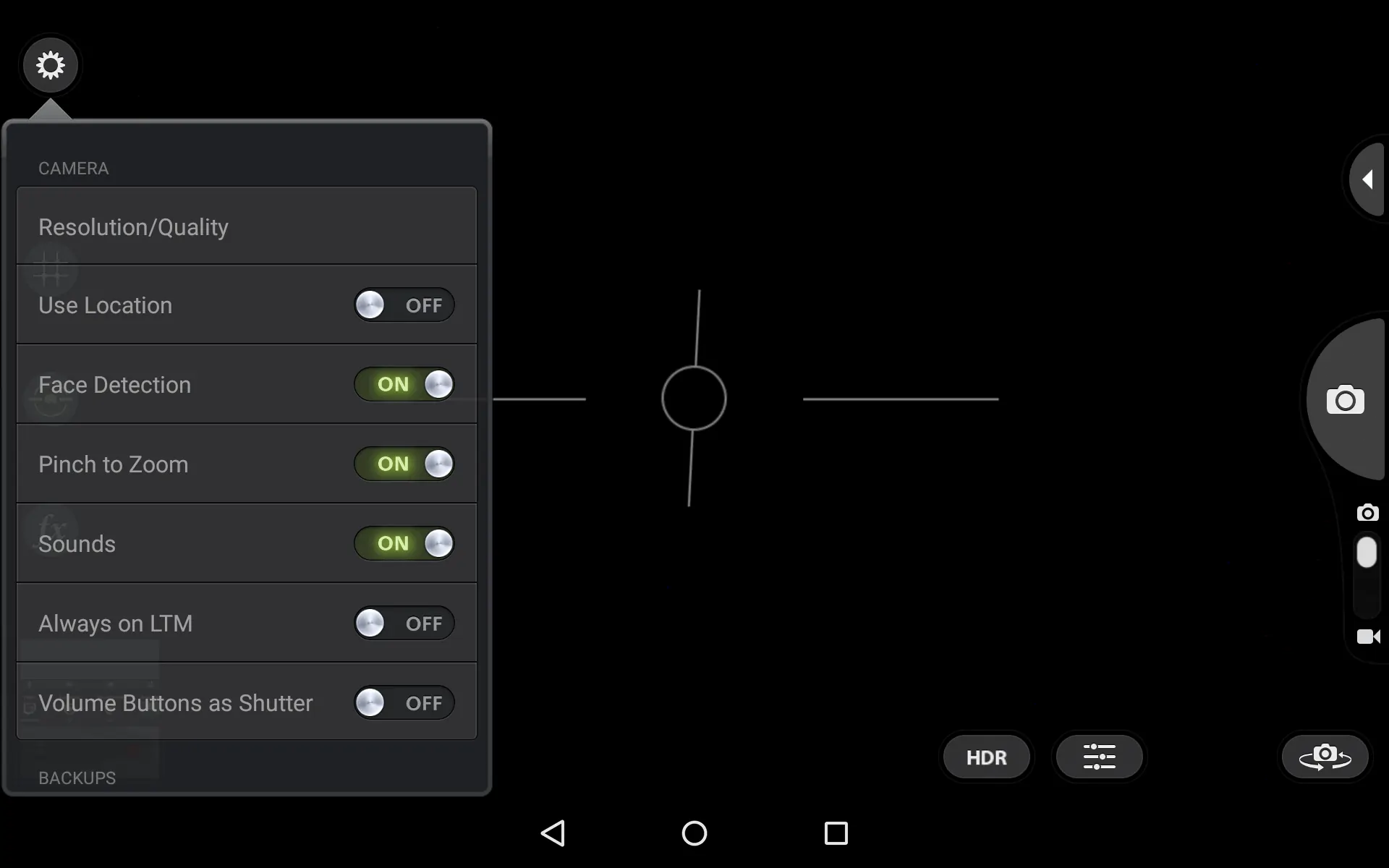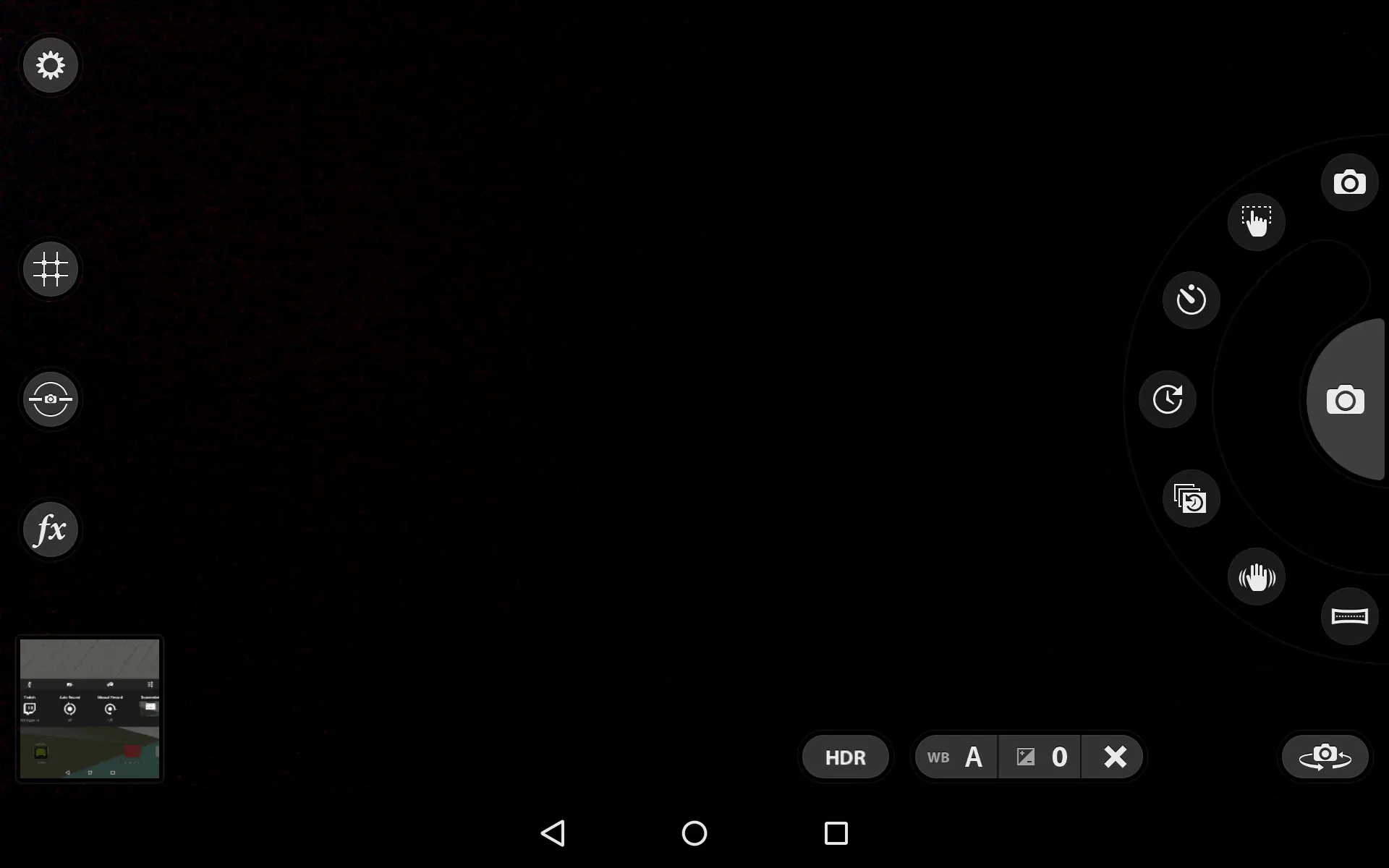In spite of the tablet industry seeming to be in decline, there is still a surprising number of tablets hitting the market. Earlier today NVIDIA announced that they were relaunching their SHIELD Tablet in the form of the NVIDIA SHIELD Tablet K1. Generally speaking, much of the tablet is the same as the previous version, although it does come with some small changes as well as a revised price tag. We have been testing out the newer version over the last week and here is some insight into what is now on offer with the NVIDIA SHIELD Tablet K1.
Specs
In terms of the specs, the NVIDIA SHIELD Tablet K1 comes equipped with an 8-inch display which makes use of a 1920 x 1200 resolution. Inside, the SHIELD Tablet K1 comes loaded with 2GB RAM and powered by an NVIDIA Tegra K1 processor (clocking at 2.2 GHz). Storage comes in the form of 16GB internal storage and there is the option to expand, thanks to the inclusion of a microSD card slot (up to 128GB). Moving to the camera side of things and the Tablet K1 comes equipped with a 5-megapixel rear camera, which is coupled with a 5-megapixel front facing camera. Additional features on offer include Bluetooth 4.0, Wi-Fi 802.11a/b/g/n 2×2 MIMO 2.4 GHz, as well as 5 GHz Wi-Fi and a mini-HDMI out. The Tablet K1 comes running on Android 5.1.1 (Lollipop) out of the box and in terms of the dimensions, measures 8.8-inches in height, 5-inches in width and 0.36-inches in depth. The NVIDIA Tablet K1 weighs in at 13.7 oz (390 grams).
Design & Hardware
This is a relaunch of the NVIDIA SHIELD Tablet and as such, we are not looking at much of a design change. In fact, if you placed the before and after models together, you would be hard pressed to tell the difference. This is because it is essentially the same tablet. That said, for those that have not picked up the SHIELD Tablet before, we will approach this from scratch.
The Tablet K1 is an 8-inch tablet and as such, fits quite nicely in the hand (for a tablet). This is a tablet that you could use one handed if you absolutely needed too. The build quality however, is not the best. There is nothing overtly wrong with the build quality and again, you would be hard pressed to point out any particular design flaws, as there are pretty much none. However, this is largely a plastic affair with little going on in terms of pizzazz. Although, the one benefit to the plastic, is that it does mean the tablet is very light in comparison to other more premium-material used tablets.
In terms of the display, on offer is a 1920 x 1200 resolution display. Again, this is not the most premium of resolutions and you will find better on the market. In fact, you could have found better earlier in the year when the tablet was launched, which does indicate that as the months have passed and the level of resolution has increased, NVIDIA chose to leave the display as it is. And in truth, it is easy to see why.
Although the spec-enforcers will be critical of a display resolution like this, there is nothing wrong with it. It produces reasonably rich colors, is clear and thanks to the K1 processor inside, you don’t have to worry about any glitching or jumping when watching content. It is simply a nice display and certainly one which is good enough for a tablet in this price range.
Moving to the connectors and on one side you have the 3.5 mm headphone socket, mini-HDMI socket and microUSB socket, along with a side facing speaker. The opposite side is largely left untouched, with the exception of another side facing speaker.
The bottom is also largely untouched with the exception of the magnetic connector points for those who opt to purchase the magnetic cover. While the top is where you will find your volume buttons and the power button.
 Speaking of which, this is where probably the weakest point of the design of the Tablet K1 comes in. The power and volume buttons are extremely poorly designed and are very difficult to use. Pressing them is a bit of a nightmare and more often than not, you are having to physically look at the buttons to see if you are making contact. There is simply very little tactility on offer here. This was the most disappointing aspect of the design and an element which NVIDIA really could have been improved in an updated version.
Speaking of which, this is where probably the weakest point of the design of the Tablet K1 comes in. The power and volume buttons are extremely poorly designed and are very difficult to use. Pressing them is a bit of a nightmare and more often than not, you are having to physically look at the buttons to see if you are making contact. There is simply very little tactility on offer here. This was the most disappointing aspect of the design and an element which NVIDIA really could have been improved in an updated version.
Moving to the really nice bits and the most obvious of which is that the Tablet K1 comes sporting front facing speakers. That is, in addition to the side facing speakers on offer. This is a nice benefit for those looking to game and watch media and does offer a much greater and wider audio appeal and distribution. In truth, the quality of the speakers are not fantastic. They are sufficient and the four speakers do make gaming a lot more enjoyable, however, they are just not great speakers.
If you are coming from the previous version or at least are aware of it, you maybe starting to wonder if there is actually any differences between the newer model and the older one. Well, there is. The SHIELD Tablet did come sporting a stylus which you could slot into the top left corner. This is now absent on the Tablet K1. So depending on your view on styli in general, will likely determine whether the removing of the stylus was a benefit or not. As a result, there is no stylus pocket included on the tablet. Which if nothing else, does bring a more uniformed look to the tablet overall.
Software & UI
The software on the Tablet K1 is again, largely the same as what we had on the first edition. Although, for the uninitiated, this is where things get complicated. To explain this, the operating system which comes running on the Tablet K1 is a very lightly skinned version. Therefore, it is close-to-stock Android with very few software tweaks. However, where the complication comes in, is that in spite of being lightly skinned, it does come with a lot of NVIDIA features out of the box. So this is close to stock version of Android, but one which is more feature-rich. The original SHIELD Tablet came running on Android 4.4 (KitKat) at launch, although soon after the launch it was upgraded to Android 5.1 (Lollipop) and this is what you will find on the Tablet K1 with the current version in use being Android 5.1.1.
In terms of the features, anyone who owns a SHIELD TV will be very much at home here. NVIDIA have loaded in the same sort of features that you will find on SHIELD Android TV. These include a dedicated way to access the games you would find on the Play Store as well as the additional NVIDIA gaming options. This will be covered in more detail in the next section.
There is also some minor tweaks to the settings. The first and most obvious is the SHIELD Power options which are included in the main settings list. This section provides a more unique way to adjust the settings of the system to improve battery life. This can be done through a variety of tweaks including adjusting the brightness, restricting certain app feature and also adjust the performance of the processor to be less demanding.
Likewise, the quick settings menu also includes some more NVIDIA-unique features. Most notable is the inclusion of the quick setting icon for the SHIELD Controller. If you do buy the additional controller, then the quick setting allows you to quickly jump to the controller syncing menu, where you can connect your controller (or disconnect if you want to save battery etc). This icon also cleverly shows you the level of battery life remaining on the controller. Once running low, the controller icon appears with a red low-level warning.
There is also a share function included in the settings menu which seems to be primarily geared towards the use of Twitch. When the quick settings icon is pressed, an onscreen menu appears where you can quickly activate the Twitch feature, take a screenshot or just record your audio.
Last but not least, the Tablet K1 does come equipped with a ‘console mode’. As the Tablet K1 comes equipped with a mini-HDMI port, you can connect the device to a TV directly. When connected and by enabling console mode, the Tablet K1 switches off its internal screen and only displays content via your main TV or additional connected display.
The rest of the software as mentioned, is pretty stock-level. Lollipop is on show here and the general layout, navigation, settings and apps offerings are all minimal and largely untouched.
One point worth noting which was considered to be a negative, is that some of the stylus software seems to remain in place. In particular, NVIDIA Dabbler. This was a great feature for those using the stylus, where you could essentially paint, draw and otherwise. However, without the stylus, the feature feels a bit redundant and unneeded. Yes, you can use your finger but the whole process is time-consuming and frustrating without the stylus.
Of course, this could be something which is phased out in time as it is on the software side of things, although that seems unlikely as any updates rolling out the Tablet K1 will not be different to the first edition of the device which does come with the stylus. Not to mention, NVIDIA is still offering the stylus for purchases as an accessory, and for those who do pick one up, the inclusion of the software will be of benefit. Although, for those less likely to pick up the stylus, the inclusion of the NVIDIA Dabbler feature is not that useful.
Gaming
When it comes to an NVIDIA product, gaming is always going to be high up on the agenda. The SHIELD Tablet K1 is no different. For those who are familiar with the first version or the NVIDIA SHIELD Android TV, will be well-versed in the level of content that is on offer with an NVIDIA product.
The Tablet K1 is of course, an Android device and this does mean that it is instantly compatible with the full variety of Android games on offer through the Play Store. However, in addition to the traditional Play Store route, the Tablet K1 also comes equipped with the NVIDIA SHIELD Hub which offers an alternative route to access Android gaming content. To be more accurate, the shop through the SHIELD Hub offers quick access to games and content which is better designed for the Tegra K1 processor. Thanks to the processor and its 192-core GPU, the Tablet K1 can play a variety games which would struggle more on other non-Tegra K1 sporting devices. These are normally released as NVIDIA exclusives through the Play Store and include the likes of Half-Life 2 Episode 2, Contrast, Pix the Cat and so on.
However, that is not all. This being an NVIDIA product also does mean that owners have access to the NVIDIA dedicated GeForce NOW service. In fact, this is one of the aspects which will differ from the previous edition of the tablet as the GeForce NOW service was not readily available at launch of the first edition. For those new to this service, GeForce NOW offers Tablet K1 owners access to (currently) over sixty PC game titles. The service does require a monthly subscription fee (priced at $7.99) but does currently come with a three-month trial period. For the subscription, you can stream a number of triple A titles including the likes of Saints Row, Killer be Dead, among others. This is a list which NVIDIA is also committed to increasing with new titles becoming routinely available.
This is the service which is available to SHIELD Android TV owners and one of the benefits of the system being cross-platform compatible is that you can switch from playing on one device and moving to the other. So if you own both the Android TV version and the Tablet K1, you can be playing a game at home on the big screen and then continue where you left off on the Tablet K1 or vice versa.
There is also the access to the GameStream service, which again, many NVIDIA device owners will already be familiar with. GameStream allows you to sync your PC with your Tablet K1 and play your games directly on your Tablet K1. This of course, does require specific NVIDIA powered-hardware as only a number of NVIDIA processors are compatible with it.
Battery Life & Performance
When it comes to battery life, the Tablet K1 is a relatively stable device. During testing, the tablet was easily able to offer a decent level of off-the-charge performance and without any major issues. To provide some insight, when the tablet was used primarily for gaming (with some minor surfing and video watching), the tablet typically offered about five hours of usage in between charges. This was on the reasonable side, when you consider the level of gaming which was being used and the constant connection to the SHIELD controller at the same time. As such, if you were to use the tablet for more traditional tablet levels of usage (surfing and the occasional video playback) you could probably expect to see much closer to eight hours of usage. At the other extreme, when the tablet was used almost exclusively for gaming and at the maximum brightness, the battery was typically limited to about three hours of screen on time.
In terms of charging, things are about standard here. The Tablet K1 typically charged in about two and half hours from almost empty (less than 10%) to full. It is also briefly worth pointing out that as well as the charge cable, the SHIELD Tablet K1 also comes equipped with the SHIELD Worldwide charger which offers all the possible international plugs adapters you could ever need.
In terms of performance, there is literally nothing to complain about with the Tablet K1. Not only is this a smooth performing device for a tablet, but is actually a smooth performing device in general. Thanks to the using of the Tegra K1 processor, the Tablet K1 runs incredibly smooth during all instances. When surfing and generally navigating the tablet, movements and scrolling were smooth and pages, apps and so on – opened, switched and closed effortlessly. The Tablet K1 never encountered any serious stalling or sputtering. This was an extremely well performing and fast moving tablet
The same can generally be said for gaming too. When the Tablet K1 was used with the GeForce NOW service, the performance was generally excellent. When streaming, there was the occasional stutter, although this is probably to be expected due to the nature of streaming and did not feel an issue with the tablet specifically. For instance, it could never be solely attributed to the Tablet K1, as the tablet does warn you when the network connection is a little weak. Not to mention, the stuttering encountered was very rare with the streaming service generally extremely reliable and consistent. As you would expect, this was also the case when playing downloaded games too. The performance on offer was generally faultless.
Overall, the performance was probably the strongest aspect of this tablet. Throughout hours of testing (and often in terms of continuous and prolonged usage) the Tablet K1 performed consistently well. Occasionally the tablet would heat up after hours of substantial use, although, even this could not be considered to be an issue, as the level of heating was minimal when you take into consideration the processing going on at the time.
Benchmarks
It is no secret that benchmarks do not provide substantial evidence of how a device will perform, but what they can do is offer a greater level of insight into what could be expected from a device in terms of performance. Especially as benchmarks can be compared across devices offering some form of a standardized measurement. In terms of the results, on AnTuTu, the Tablet K1 came in with a score of 55,389 which placed it firmly in sync with many of the current flagship smartphones, let alone tablets. On Geekbench, the Tablet K1 pulled in a single score score of 1,141 and a multi-core score of 3,636 – which considering this is a tablet, were very respectable scores. Last, but not least, when running 3D Mark, the Tablet K1 achieved an overall score of 2,495 and for those wondering, a graphics sub-score of 2,780.
So overall, when considering that many of the internals of the Tablet K1 have been unchanged since the first edition, it is somewhat surprising to still see how well the Tablet K1 scores and does in many senses explain why NVIDIA did not upgrade much inside, as the Tablet K1 is very much a relevant tablet by today’s tablet benchmarks standards.
Camera
Similar to the rest of the specs and features the cameras on offer with the Tablet K1 are the same as they were before on the SHIELD Tablet. This means you are looking at a 5-megapixel rear camera which is coupled with a 5-megapixel front-facing camera. Now cameras are not exactly well spoke of features on tablets, as they are generally much more basic than what you will find on smartphones and the Tablet K1 is no exception. In fact, if you were to compare against one of the other flagship tablets, you might even find the twin 5MP cameras on the Tablet K1 further disappointing.
However, they are not as bad as you might expect. The image quality is never going to rival what your smartphone will but to be quite honest, they are reasonably good for a tablet. Images typically always came out right first time, the table was reasonably efficient at taking images during lighted and less-lit conditions and for a tablet, the cameras did feel a lot better than expected.
You can see a selection of sample images down below (click the image for more images).
Of course, one of the reasons the Tablet K1 comes loaded with that 5-megapixel front facing camera (which is high in comparison to other tablets) is due to the Tablet K1 placing an emphasis on the ability to stream your game playing through Twitch. So if you are someone who likes to upload their gameplay, then this front-facing camera will prove to be more sufficient and capable.
In terms of the software, NVIDIA have opted to forgo the stock Android camera and instead the Tablet K1 does comes equipped with the Camera Awesome App. Generally speaking, the interface for the cameras is extremely basic, however, when you factor in that this is a tablet, the software is more than sufficient. You do have some options when it comes to setting and adjustments and HDR mode is included. However, it is not the easier of camera software settings to navigate. The layout and general usage is a bit untidy and this certainly won’t be something that is easy to deal with on the fly and when trying to quickly take a picture on the spot. But again, this is a tablet and relatively speaking, it is not hugely any worse than what you will get on other tablet offerings.
Availability
For those interested, the SHIELD Tablet K1 is now available to buy directly from NVIDIA as well as from the likes of Amazon and Best Buy. The big selling point here is the fact that the Tablet K1 has seen a price drop and will only set you back $199.99. However, you do only get the tablet for this money. We were testing the tablet out along with the official SHIELD Controller (the same one used for other SHIELD devices) which can be purchased as an accessory for $59.99. Likewise, in many of the images you will see a magnetic cover which is also available for the Tablet K1. This again, is sold as an after-purchase accessory and will cost you $39.99 separately. So for the cover and the controller you are looking at an additional $100. Although, on the plus side, even with the accessories added to the bill, the revised Tablet K1 with cover and controller will only set you back the price of what the original SHIELD Tablet was at launch. For those who had liked the idea of using the stylus with the tablet, the stylus is still available to buy and can be used with the software in the same way as before. The cost of the Stylus is $19.99.
Wrap Up
Many might be wondering whether or not there is much point to NVIDIA releasing the same tablet and while the obvious answer might be “no”. There is one big difference here. This tablet will only cost you $199, which is considerably cheaper than the first launch version would have cost you. For a tablet which comes boasting (in tablet terms) fairly on-point specs, a nice build and the clear emphasis on gaming, it starts to make more sense. In fact, you could argue that NVIDIA tried to put too much in to the first release version which inevitably would have bumped up the price. By removing elements of the tablet, like the stylus, not only can the cost come down, but the tablet feels more sensible with a clearer direction.
Should you buy the NVIDIA SHIELD Tablet K1?
In all honestly, it is hard to find a reason not to recommend buying the Tablet K1. Although this is essentially a relaunch of an already existing product, the revised price means that this is not only an affordable SHIELD product, but is an affordable tablet in general. If you were to just buy this for its tablet abilities, you would not be disappointed. Thanks to the Tegra K1, the tablet runs incredibly smooth. Likewise, if you are a gamer, then this is certainly a nice addition to take your games with you. Not to mention the added benefits of Twitch compatibility and the use of the controller makes it an even better gaming experience. This tablet does cater to many markets and consumers and the only real consumer area that it won’t appeal to, is those who no longer see the value in owning a tablet. Otherwise, it is a worthwhile purchase.

